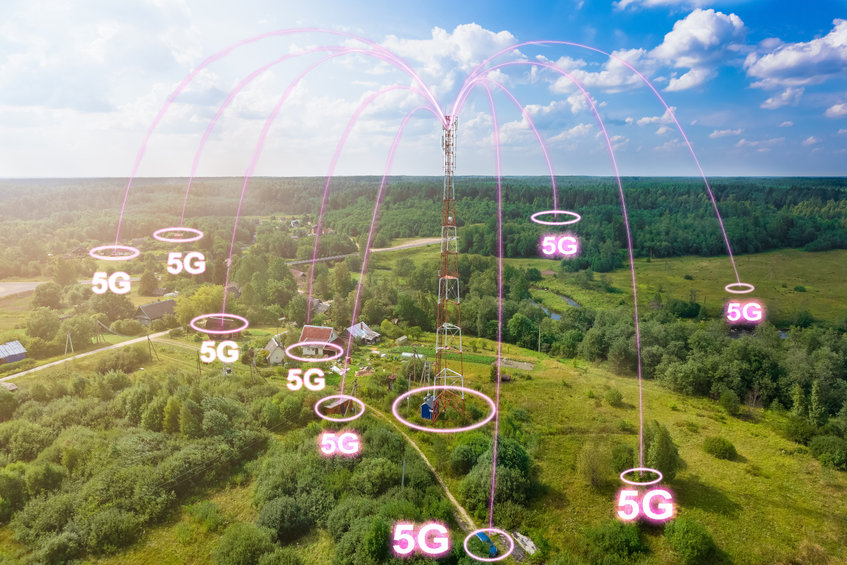FWA services have been a success. What has that meant for testing?
One clear success for 5G thus far has been the emergence of 5G Fixed Wireless Access broadband services, providing new revenues and a basis for converged service offerings in areas where wireless network operators do not have a wireline footprint.
According to a June report from the Global mobile Suppliers Association (GSA), more than half of existing 5G deployments include FWA service launches. FWA services have global appeal and are particularly popular in Europe. In the 27 countries that make up the European Union, GSA found that there have already been 82 commercial launches of FWA networks. Meanwhile, the Middle East and Africa aren’t far behind in activity levels.
In the United States, the domestic FWA subscriber base could reach more than 20 million by 2028, based on estimates from the carriers. To give a sense of the scale that individual carriers are dicussing: Verizon Consumer CEO Sowmyanarayan Sampath said at a recent Bernstein conference that in terms of broadband coverage, Verizon has a “clear path to getting to 100 million homes covered with either FWA or fiber.”
He added: “What’s important is on fiber we get up to 40 million homes, and the rest will be covered by FWA.”
However, as Sylwia Kechiche, senior director of industry analysis at Opensignal, pointed out at the recent Test and Measurement Forum, there’s a catch with FWA. “A Fixed Wireless Access user consumes around 15 to 20 times more network capacity than a typical mobile smartphone user,” she explained, adding that “typically, at least in the U.S., [they] generate around the same revenue.”

Kechiche continued: “This actually creates a very delicate balance. So there’s a need for very careful network planning, and making sure there’s enough spectrum capacity—because Fixed Wireless can cannibalize some of mobile performance, especially when you think about peak times.”
She added that key testing questions include capacity and performance, because “poor backhaul equals poor user experience.”
Joey Villamil, market development manager for wireless—America at EXFO, confirmed that issues in the transport network can have a major impact on end-user experience, particularly for FWA.
“If you just deploy cell sites and you don’t improve the transport network, you’re going to end in a situation where even though people might have service, they might not have the level of service that they’re expecting,” Villamil said. “They might not be able to do their jobs or they might not be able to do homework, something as simple as that.”
Carriers are upgrading transport networks from 10 Gbps backhaul to 100G and even 400G at the moment, he added, in order to met anticipated capacity needs for both current 5G use cases like FWA, and anticipated future needs.
“If you’re going to really get to the next level and improve coverage and hits on some of the … 5G advancements, you’re probably going to have to continue to increase the transport networks,” Villamil said.
FWA also behaves more like home broadband than a mobile cellular service, which means that network traffic tends to be highest in the evenings. Understanding how performance differs at the cell-edge is particularly important to the customer experience, Kechiche added. Also, router quality and antenna set-up are key, but installation—particularly self-installations by customers—may mean that devices are not positioned optimally.
“Customer experience became a very hot topic last year in many of our markets, but North America and Asia Pacific especially, around Fixed Wireless Access,” said Stephen Douglas, head of market strategy for Spirent Communication, in an interview earlier this year. He added that operators wanted to test end-user experience where shared spectrum was being used with mobility subscribers and how the networks were performing at peak hours in the evenings.
Overall, Kechiche said, testing needs to focus on real-world customer experience and be dynamic in order to understand the shifting balance between mobile and FWA customers utilizing the same network and resources. But she also made the point that FWA can be designed and tested for “good enough” service.
“As Fixed Wireless Access is expanding, it is clear it cannot offer the same speeds as fiber—and it’s not attempting to,” she said. “Quite often when we think about what end users really want, they want a ‘good-enough’ connectivity.” When Opensignal analyzed FWA through the lens of its “constant quality” metric, it scored about 15 percentage points lower than fiber connectivity. That’s still good enough for stable network performance and satisfactory responsiveness for most applications, she added.
Interested in more insights on 5G testing challenges and trends? Check out the sessions from Test and Measurement Forum on-demand.

